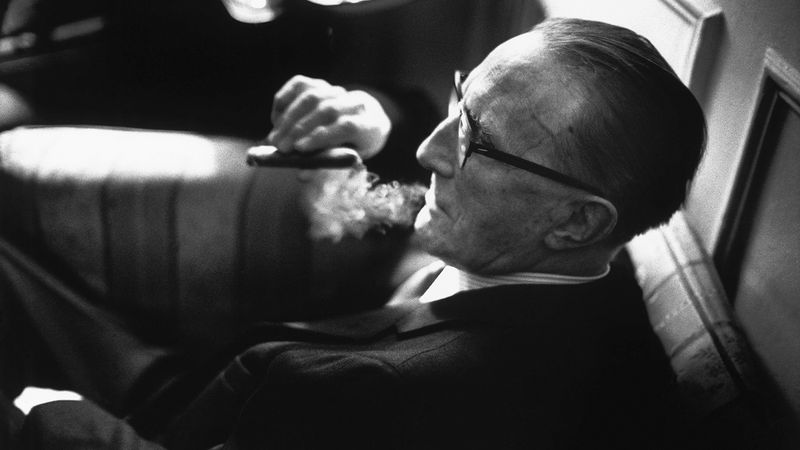THE JOURNAL

Mr Marcel Duchamp in France, 1967. Photograph by Mr Bruno Barbey/Magnum Photos
Five tips for a satisfying smoke.
We have Mr Oscar Wilde. The US has Mr Mark Twain, at least in terms of witty apothegms. My favourite? “If smoking is not allowed in heaven, I shall not go.” Mr Twain was not a man who smoked to excess – only one cigar at a time, he was careful to point out – but the inference is clear enough: heaven is a cigar.
Cigars are a degustatory delight, instruments of pleasure that soothe the jangled nerves, knit the ravelled sleeve of care and… all that sort of thing. It is impossible not to feel slightly better about life with a cigar in the hand. It is one of life’s great consolations and has about as much in common with a hurried cigarette snatched outside an office as a can of extra-strength lager has with a magnum of Château Pétrus.
Indeed, cigars are often compared with fine wines. Both are natural agricultural products, and there is plenty to learn about plants and soil. What is more, both rely on special skills and equipment when it comes to making and enjoying them. So, how best to do it? The tips below – consider them the cigar essentials – should come in handy for anyone who wants to further their knowledge in this department.
01. Get the right kit
One of the great joys of an interest in cigars is the chance to load up on accessories: humidors to keep cigars in optimum condition, leather sleeves in which to transport them, cutters with which to prepare them and, of course, something with which to ignite them. As a general rule regarding cutting the closed end or “head” of the cigar, the late Mr Zino Davidoff advised that “if properly cut, the area of tobacco exposed at the head of the cigar should be the same or almost the same as the open end at the foot”. If you can, avoid petrol lighters and use matches, gas lighters, or best of all, spills of cedar wood.
02. Choose wisely
A cigar should suit the time, as in, yes, the time of day but also the time you have available to enjoy it. In the morning, something at the light end of the flavour spectrum and not too time-consuming is called for – a Davidoff No.2 or a San Cristobal El Principe – but after a long day and a substantial dinner, try a spicy Partagás (the 30-minute Serie D No.4 is a classic) or, if you can lay your hands on one, a Cohiba Behike.
03. Know your limits
A cigar is not a test of machismo (that is what arm wrestling is for), so do not feel obliged to go for the most challenging-looking cigar available. Even those with the most attuned of palates will tell you that a strong cigar (such as a big Bolívar or Ramón Allones or, indeed, some of the more characteristic Nicaraguan cigars) on an empty stomach is a waste.
04. Know your sizes
Long, slim cigars look incredibly elegant, but they might suffer draw problems (Cuban production can be susceptible to this). Fatter cigars, which are reckoned in ring gauge points of 1/64in (0.39mm), allow the blender to use more tobaccos to create interesting flavours. They tend to burn more coolly, but can be a bit of a mouthful. There are occasions for both, just as there are times when a slim dress watch is called for and times when you need a robust sports watch.
05. Befriend a cigar merchant
This is the best advice I can offer. An experienced cigar merchant will guide your tastes, help build your collection and introduce you to cigars that you might not otherwise try. My cicerone through the world of cigars is Mr Edward Sahakian, who has, through the bond of an interest in cigar culture, become one of my dearest friends.
Cigars: A Guide by Mr Nicholas Foulkes (Preface, £25) is out now
AFTER-DINNER DRINKS
Keep up to date with The Daily by signing up to our weekly email roundup. Click here to update your email preferences